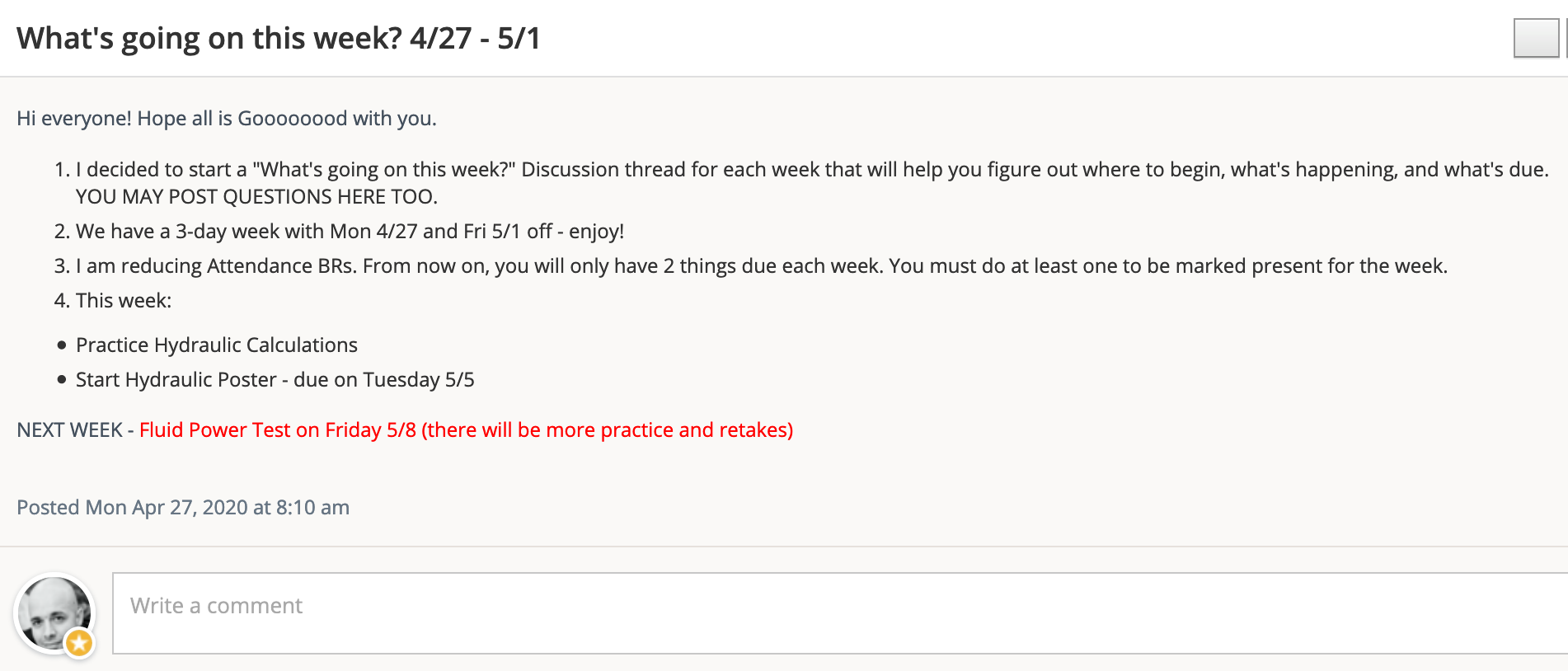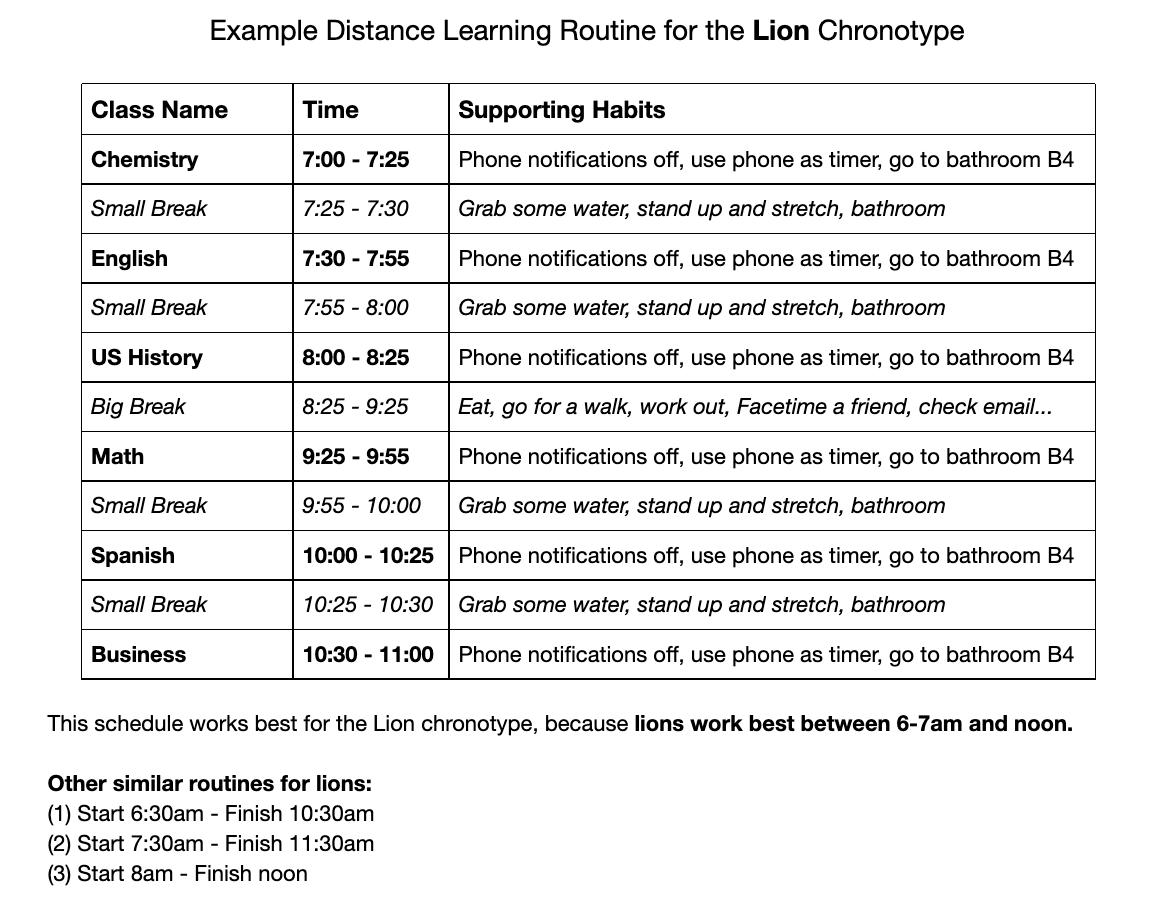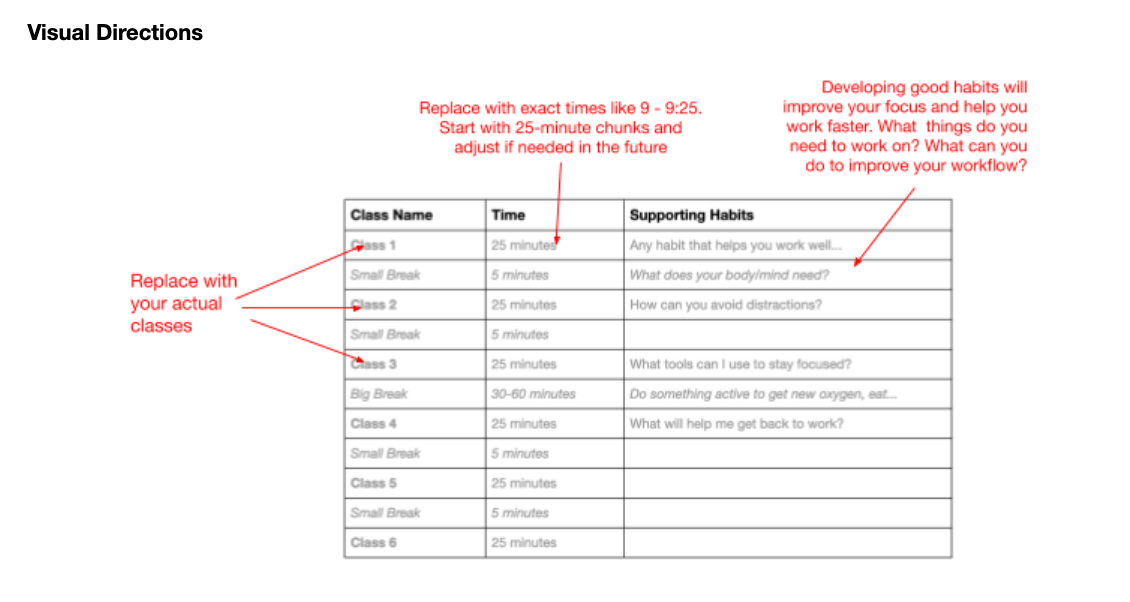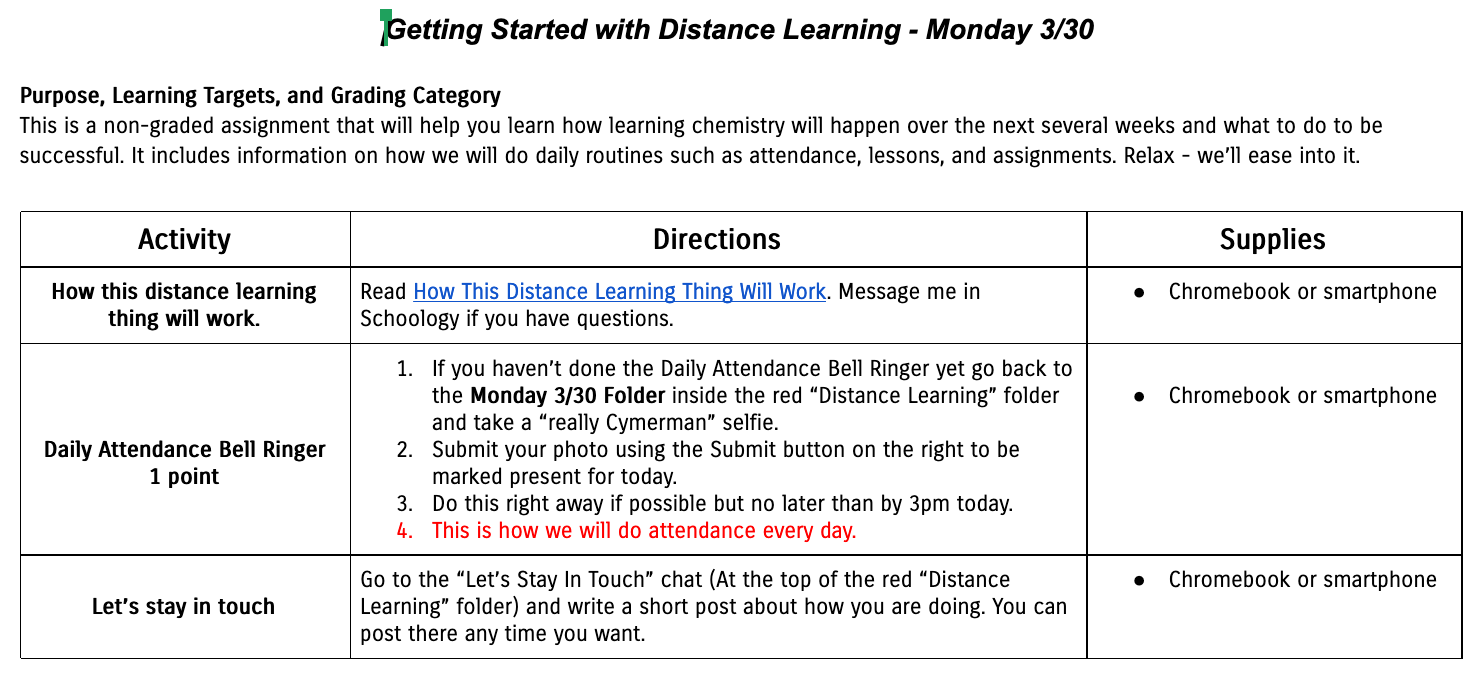The Most Important Quality of an Online Teacher
I recently came across Excellent Online Teaching: Effective Strategies For A Successful Semester Online - a short book written by Aaron Johnson that inspired me to write this post and improve my online teaching.
To be honest I was not looking for help with online teaching. I thought I was doing well. I still think I am but after reading the book I see that my limited experience with online teaching has led to me overlooking some things and not emphasizing other important aspects of online instruction. I realized there’s no getting around the fact that while I’ve been doing blended learning for about 4 years now I’m still pretty fresh to this distance learning thing.
The author of the book has been doing it for fifteen years. First as an online high school teacher and now as the technical advisor and faculty developer at the Denver Seminary helping instructors create better online classes and become better online teachers. I suppose this is a pretty vague job description…
What appealed to me in Excellent Online Teaching was the apparent lack of flashy digital activity how tos. Instead of calls and rationales for the use of cutting edge edtech, Johnson focuses on building structures that lead to successful online experiences for teachers and their students.
He starts his book with the recognition that with the transition to online instruction teachers lose the framework they are used to and are now tasked with building a new one. The most important parts of this new framework are connection, communication, demonstrating compassion (or empathy), and developing the discipline of prompt feedback. Moreover, the author claims that developing a routine that allows one to consistently perform all parts of this online teaching framework is what separates excellent online teachers from the “just okay” ones.
And so, this essay is an honest examination of my online teaching so far - the successes, the shortcomings, and the work I must still do to get better at it. I hope you find some of my insights helpful in walking your own online teaching journey.
Compassion or Empathy?
I really believe the author said “compassion” but was going for “empathy” on this one. In the book, he admits to developing a very negative perception of his students because he failed to try to understand who they were and where they were coming from. He expected them to fit into his schedule and understand and adapt his procedures right away. He also failed to accept that students will reach out with (often the same and previously answered) questions for a variety of reasons and at various times throughout the day.
Class Lists
Over time Johnson discovered that printing out class lists with student pictures and contact information was a great first step to getting to know his students. Doing so might seem unnecessary at first glance as the rosters are always available in the learning management system the school uses. However, having well-organized hard copies of his or her classes gives the teacher quick access to phone numbers and emails making communication more likely. It allows the teacher to quickly send “checking-in” emails that show students the instructor cares and help make the relationships more personal.
Check-in Emails
In his book, Johnson gives the template below and encourages teachers to copy/paste it and send to all of their students as often as their busy schedules will allow. Just don’t be that guy/gal who forgets to change the name :o) - (he also encourages the use of emoticons such as this one).
“Brian, I just wanted to check in with you and see how your semester is going. I’d also like to know if there is anything I can do to make your learning experience a better one. Glad to have you in class this semester.”
I must admit that I have not printed my rosters (I will pronto) and did not think about regular check in emails. I realize they are time-consuming but well worth it because they build solid relationships with students which will undoubtedly make them feel welcome and motivate them to learn. Another benefit of keeping hard copies of class lists is the ease with which the instructor can make a note regarding a student’s needs, modifications, or life situation right next to his name and face.
Walking In Their Shoes
Another strategy that helps an online instructor build empathy for her students is to put herself in their shoes by clicking through all the links for each week and estimating the amount of time and mental effort someone who has no online learning experience and zero knowledge of the class content might put into not just completing, but also navigating the online environments she set up for them and understanding the topics and skills they are asked to master. Then, after she multiplies the above times the number of classes the student is taking and adds the feeling of uncertainty associated with the novelty of it all she begins to feel how overwhelmed and anxious they may be. All kids are different but undoubtedly some are plain freaking out.
Focusing On What’s Most Important
As a result of feedback on how overwhelming distance learning has been for many students I decided to stick to only one daily activity or assignment. I focus on one major topic per lesson (it might include a few subtopics), starting with a front-loading activity on day one that has formative feedback built in. The next day, students complete a relatively small (30 minutes or less) summative assignment that serves as the follow up to the learning activity. Some weeks contain two back-to-back formative activities while others might involve completing a three- to five-day graded project but, in general, I try to have 2 graded activities per week.
Here’s what my students will see during the week of May 11th (minus the arrows and descriptions I added for my readers):
Example Online Week in My Chemistry Class
It is important to note that for the learning (front-loading and formative) activities I choose online applications that are interactive - they allow me to create structures that promote processing of the content and make giving immediate feedback easy. Maximizing each activity in this way becomes important when one considers the amount of content we will never get to. And I just can’t let go of this belief that maybe focusing on fewer topics and investing time into diving deeper will lead to higher quality learning.
What’s Going On?
Excellent Online Teaching woke me up to the fact that no matter how clear my directions seem to me and how easy my structures appear, they will be confusing to some students and provoke anxiety in others. Johnson advises online teachers to assume our students “start each week lost, treading in a sea of links and documents” and it’s our job to “throw them a lifeline and get them oriented.” He suggests building a habit of sending out a weekly email to students every Monday morning to keep them afloat.
Following the author’s suggestion of getting students oriented each week but knowing that many high schoolers don’t check email regularly I added a “What’s Going On This Week?” discussion thread to the beginning of each week in my learning management system.
Treading the Sea of Links and Documents
This is what my students will see in Schoology next week when they log into Chemistry. Being the one who set it up I could easily dismiss the image to the left as “easy to follow,” but considering the fact that every teacher does it differently I can imagine students have a lot of deciphering of what’s going on to do. I can help, it takes little effort and time, and pays off big.
Check out my first “What’s Going On This Week” discussion thread in principles of engineering.
What's Going On This Week Discussion Thread
The nice thing about a discussion is that students can ask and read each other’s questions as well as the answers I post. It’s likely students will ask questions that have already been answered in the thread. It’ll be important for me to not get annoyed or condescend but rather show empathy and answer with patience and compassion. After all, I do not know what other responsibilities and stresses they are dealing with at home and how much time they have to read every single thread post. All that matters is that they get their concerns addressed and that they are doing well.
Key Points
Being a better online teacher is not about the tech you use. Tools are important but people always come first.
Don’t just be empathetic. Demonstrate empathy by putting yourself in your students’ shoes every day and creating structures that help alleviate confusion and anxiety.
Print out class lists for easier communication.
Build a habit of writing regular quick check-in emails.
The start is the hardest part. Get your students going with a weekly “What’s Going On This Week?” communication (discussion, email, message etc.)
Resources
Excellent Online Teaching: Effective Strategies For A Successful Semester Online by Aaron Johnson
If you enjoyed this post or found it helpful consider signing up for my newsletter below.
Hi! I'm Oskar. I teach, write, and create to make teaching easier and learning simpler.
BOOKS
- September 2025 2
- August 2025 5
- July 2025 4
- June 2025 2
- August 2024 2
- July 2024 2
- June 2024 1
- October 2023 1
- September 2023 3
- August 2023 6
- July 2023 6
- July 2022 2
- June 2022 1
- November 2020 3
- October 2020 3
- April 2020 1
- March 2020 5
- July 2019 1
- June 2019 1
- April 2019 1
- January 2019 1
- November 2018 3
- October 2018 2
- September 2018 1
- August 2018 8
- July 2018 11
- June 2018 4
- May 2018 5
- April 2018 2
- March 2018 4
- February 2018 5
- January 2018 3
- December 2017 1
- November 2017 5
- October 2017 7
- September 2017 6
- August 2017 5
- July 2017 3
- June 2017 10
- May 2017 7
- April 2017 7
- March 2017 15
- February 2017 12
- January 2017 13
- December 2016 15
- November 2016 8
- October 2016 7
- September 2016 12
- August 2016 14
- July 2016 10
- June 2016 13
- May 2016 10
- April 2016 8
- March 2016 5
- February 2016 7
- January 2016 6
- December 2015 5
- November 2015 8
- October 2015 2
















